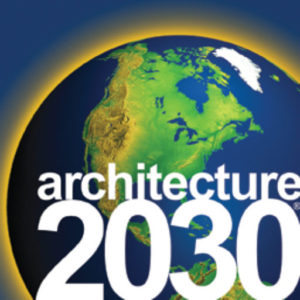Sea Level Rise Greater Than Expected
Bad News for the US
A new report appearing in today’s Science magazine, ‘Kinematic Constraints on Glacier Contributions to 21st-Century Sea-Level Rise’, projects a sea level rise of up to two meters this century. Many Americans are unaware of how little a rise in sea level is required to devastate the US. According to Architecture 2030’s sea level rise study, ‘Nation Under Siege’, beginning with just one meter, hundreds of US cities and towns along the East Coast, Gulf of Mexico and West Coast would be inundated – from East Boston MA, Point Pleasant NJ, Charleston SC and Miami FL on the Atlantic to Cape Coral and Tampa FL, New Orleans LA, and Galveston TX on the Gulf to Foster City CA and Seaside OR on the Pacific.
Prior to 1996, the rate of sea level rise was approximately two millimeters per year. Since 1996, the rate of sea level rise has almost doubled to 3.4 millimeters per year, the increase being due to land-based ice melt in Greenland and West Antarctica (see graph below). NASA’s Jet Propulsion Laboratory recently launched a new website measuring the planet’s vital signs, including sea level rise.
 |
 |
| Charleston, SC: 1.5m rise | Saint Augustine, FL: 1.0m rise |
 |
 |
| Hampton Beach, NH: 1.0m rise | Sea Level Rise (source: Josh Willis, NASA jpl) |
Sea level rise is already having a significant impact on US coastal areas. “Flooding of low-lying regions by storm surges and spring tides is becoming more frequent and causing more damage and disruptions. Around the Chesapeake Bay, wetlands are being submerged, fringe forests are dying and being converted to marsh, farmland and lawns are being converted to marsh; and some roads are routinely flooded at high tides. ‘Ghost forests’ of standing dead trees killed by salt-water intrusion are becoming increasingly common in southern New Jersey, Maryland, Virginia, Louisiana, and North Carolina. Rising sea level is gradually intruding into estuaries and threatening fresh-water aquifers”, according to a recent study (draft) from the US Climate Change Science Program.
Rising Seas On the South Carolina Coast
Using Architecture 2030 maps and video, the Southern Alliance for Clean Energy (SACE) created the following video on the impacts of rising sea level on the Charleston, SC area:
Rising Seas: Challenges and Opportunities for the Lowcountry from Open Dome Studios on Vimeo.


